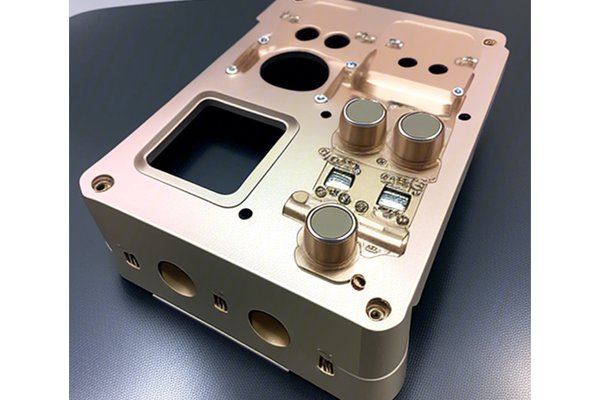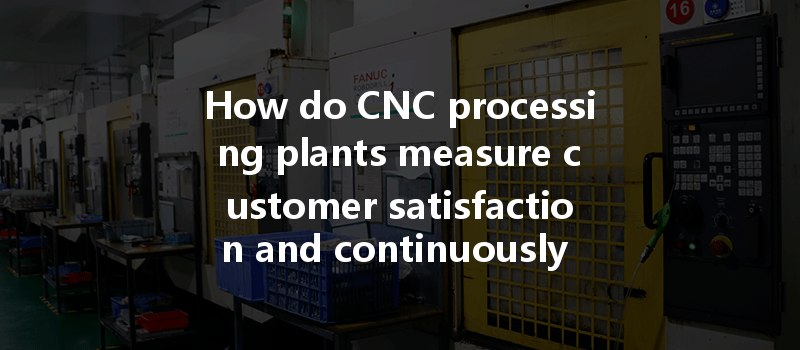Did you know that according to a 2022 customer experience report, 86% of customers are willing to pay more for a better customer experience? For CNC processing plants, this statistic underscores the significance of customer satisfaction in maintaining competitiveness in an increasingly globalized market. But how exactly do these plants measure customer satisfaction and implement continuous improvement strategies? In this blog, we will explore how CNC processing plants can effectively gauge satisfaction levels and enhance their service offerings to foster long-term relationships with their customers.
—
Understanding CNC Processing and Customer Satisfaction
What is CNC Processing?

CNC (Computer Numerical Control) processing involves the use of computerized controls to operate machinery and tools, enabling automation in manufacturing. This technology allows plants to produce complex shapes and intricate designs with remarkable precision, which is crucial in industries such as aerospace, automotive, and medical devices.
The Importance of Customer Satisfaction in CNC Processing
Customer satisfaction is not just an abstract concept; it is a measurable component that determines the success of a business. In CNC processing plants, satisfied customers translate into repeat business, referrals, and a strong market reputation.
—
Measuring Customer Satisfaction: Key Strategies

Conducting regular surveys and distributing feedback forms to customers is a straightforward approach to gauge satisfaction levels. These surveys can include questions about the quality of products, service timeliness, communication effectiveness, and overall customer experience.
Implementation Tips:
While surveys provide quantitative data, customer interviews allow for qualitative insights. By engaging customers in one-on-one conversations, CNC processing plants can uncover specific pain points, preferences, and expectations.
Implementation Tips:
Using data analytics and monitoring tools can provide valuable insights into customer behavior. These tools can track order histories, response times, and other critical performance metrics.
Implementation Tips:

In today’s digital age, customers often express their satisfaction or dissatisfaction on social media platforms and online review sites. Monitoring these channels allows CNC processing plants to gauge public sentiment.
Implementation Tips:
—
Continuous Improvement Strategies
Once customers’ satisfaction levels have been measured, CNC processing plants need to implement strategies for continuous improvement.
Implementing a robust QMS can ensure that processes are standardized, reducing variability and enhancing product quality. A QMS can provide a framework for continuous monitoring and improvement.
Building a customer-centric culture involves training employees to prioritize customer satisfaction at all levels. This includes understanding customer needs, fostering open communication, and empowering employees to make decisions that favor customer outcomes.
Continuously training employees on best practices, new technologies, and customer service skills can improve the overall efficiency of CNC processing plants, leading to higher customer satisfaction.
Embracing new technologies—such as Artificial Intelligence (AI) and Machine Learning (ML)—can enhance CNC processing capabilities. Predictive analytics can help identify potential issues before they arise, leading to more satisfactory service outcomes.
Create a closed feedback loop where customer suggestions and complaints are communicated back to the appropriate department for action. This ensures that customers feel heard and valued.
—
Case Study: Successful Implementation in CNC Processing Plants
Let’s look at an example. ABC CNC Solutions, a mid-sized CNC processing plant, implemented a comprehensive customer satisfaction measurement system. They introduced a mix of continuous feedback surveys, established a CRM with analytics capabilities, and trained staff on customer service best practices. As a result of these changes, ABC CNC Solutions saw improved customer retention rates by 30% and a significant increase in positive online reviews, which in turn led to a higher volume of new business.
—
In the competitive landscape of CNC processing, measuring customer satisfaction and implementing continuous improvement strategies are crucial for long-term success. By employing techniques such as surveys, interviews, data analytics, and embracing a customer-centric culture, CNC processing plants can not only enhance their service quality but also build enduring relationships with their clients.
Remember, customer satisfaction is an ongoing journey, requiring constant attention and adaptation. For CNC processing plants, investing in customer experience is not just a strategy; it is a necessity for sustainability and growth in an ever-evolving manufacturing world. As we continue to leverage technology and refine our processes, the significance of customer-centric approaches will undoubtedly shape the future of CNC processing.
—
This comprehensive exploration of customer satisfaction measurement and continuous improvement strategies in CNC processing plants highlights the need for businesses to evolve continually. We encourage you, the reader, to reflect on your approaches and consider how you might implement these insights into your operations. The path to exceptional customer experience is a rewarding one, promising increased loyalty and profitability for your CNC processing business.




